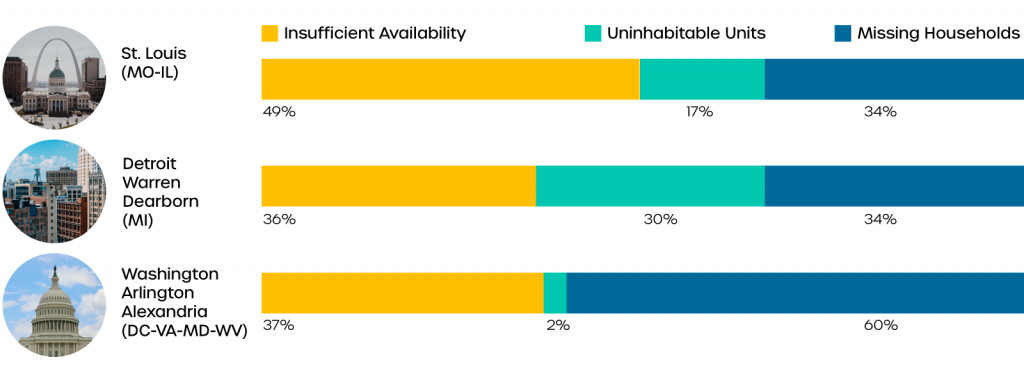What is Housing Underproduction?
Housing Underproduction occurs when communities fall short of meeting housing need. Up for Growth calculates underproduction as the difference between total housing need and total housing availability.
Four years ago, the nation’s housing affordability problem appeared to be concentrated along the coasts and in the Southwest. Now, the crisis has deepened and is more widespread, affecting urban, suburban, and rural areas and profoundly impacting residents in nearly every state.
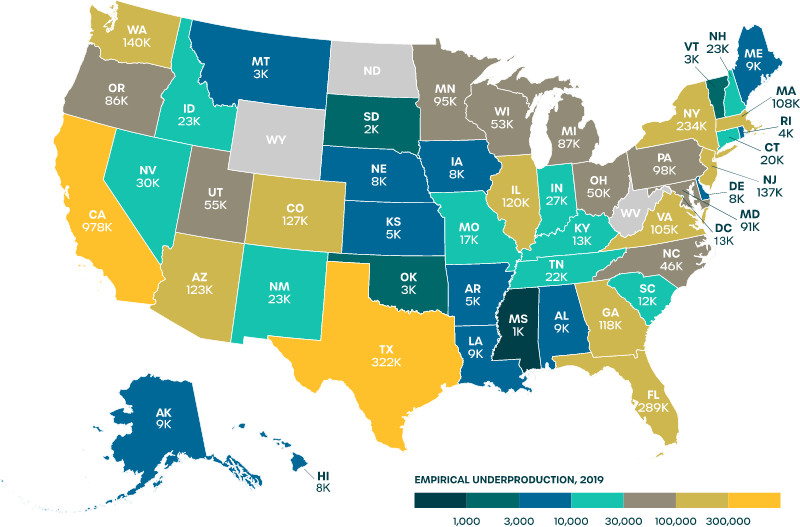
What’s Driving Underproduction?
- Missing Households Because buying or renting a home has become so expensive, new households are failing to form. Instead, more unrelated people are choosing to share a single residence. Example: Washington, Arlington, Alexandria (DC-VA-MD-WV)
- Insufficient Availability Lack of housing adequate to support a balanced housing market and absorb market fluctuations and demand preferences. Example: St. Louis (MO-IL)
- Uninhabitable Units Housing Units that have been vacant for more than a year that do not contain a full functioning kitchen or indoor plumbing. These units are removed from the short-term supply of housing as the renovation costs are assumed to be cost-prohibitive. Example: Detroit Warren Dearborn (MI)
Comparison of Regional Drivers of Underproduction
Trends in Underproduction
72 markets that had underproduction in 2012 have worsened (23.3% of total)
83 markets that adequately produced in 2012 now have underproduction (26.9%)
75 markets that adequately produced in 2012 are now trending toward underproduction (24.3%)
11 markets that had underproduction in 2012 have reached adequate housing production (3.6%)
14 markets that had underproduction in 2012 are in the process of recovering (4.5%)
54 markets that adequately produced in 2012 have continued to meet or exceed housing needs through 2019 (17.5%)
Consequences of Widespread Housing Underproduction
Perpetual Racial Inequity
Racially Restrictive Covenants, Redlining, and Urban Renewal created obstacles that systematically limited access to housing and homeownership for people of color. Despite being outlawed, exclusionary zoning persists and achieves similar outcomes.
Black Homeownership Rates have Barely Risen Since 1970
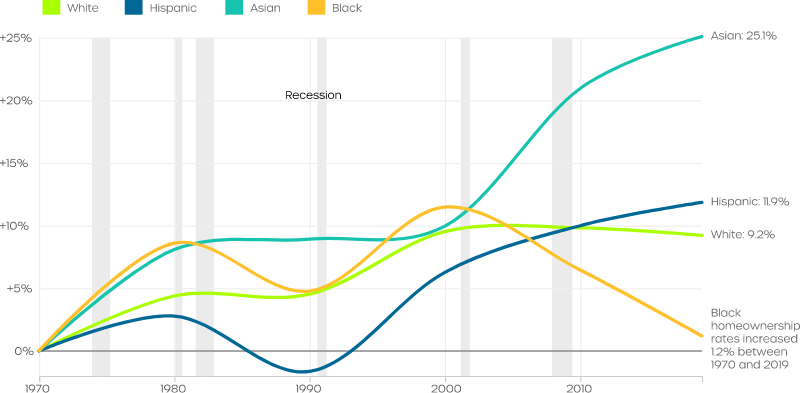
Housing Unaffordability
High housing costs generate a range of adverse outcomes that are most severe for low-income households. It contributes to houselessness and puts homeownership, a key asset-building opportunity, out of reach for renters.
Percent of Renter Occupied Households that Spend More Than 30% of Gross Income on Housing, 2019
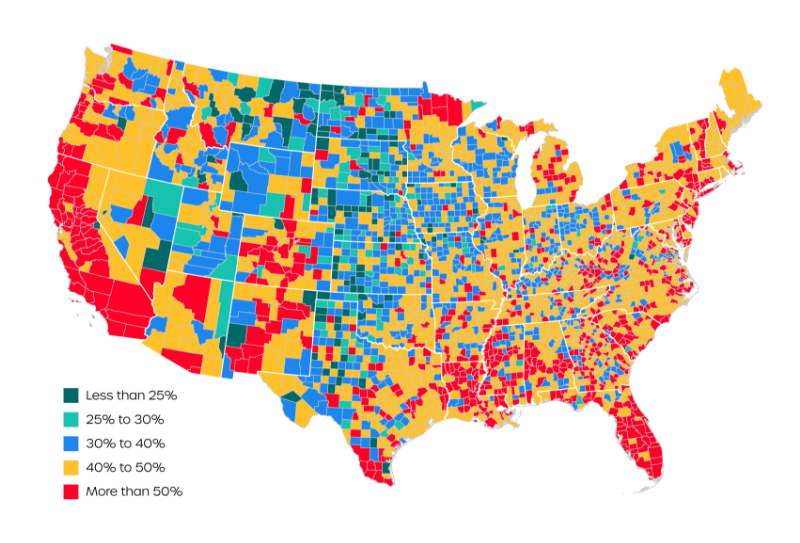
Unsustainable Economic and Fiscal Outcomes
A shortage of housing stock decreases individual access to jobs, limiting personal income growth. Additionally, at the local, state, and federal levels, a persistent housing shortage leaves taxable personal income on the table and increases infrastructure operating and maintenance costs.
Percent of Operation and Capital Costs Covered by Housing Unit Revenue Contributions
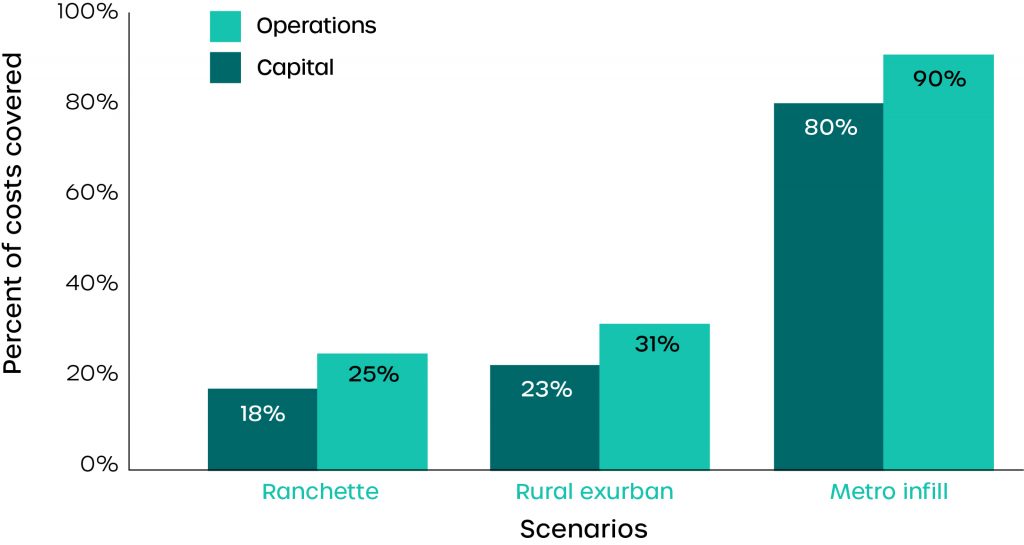
Source: Adapted from Percent of Operations and Capital Costs Covered by Housing Unit Revenue Contributions Building Better Budgets: A National Examination of the Fiscal Benefits of Smart Growth Development, Smart Growth America (2013).
Poor Climate Outcomes
Some communities have an abundance of jobs but not enough housing. This increases housing costs, limits economic dynamism, and forces long commutes that increase greenhouse gas emissions.
Relative vehicle miles traveled per capita in U.S. to the national average by household density bin (dots reflect a minimum of bin ranges)
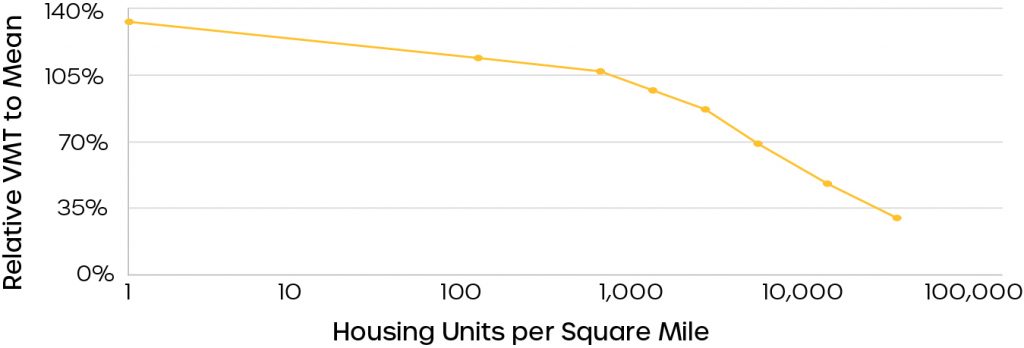
Sponsors





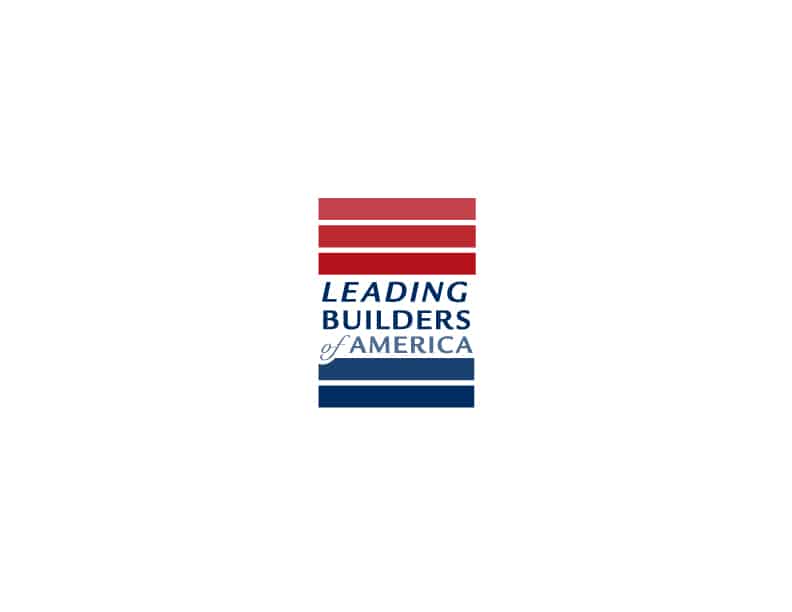


Related Downloads
Up for Growth 2022 Housing Underproduction in the U.S
UFG Dataset Metropolitan State Underproduction
Technical supplement for “Good Climate Policy Is Good Housing Policy,” essay in Up for Growth’s Housing Underproduction in the U.S. report
Technical Memorandum to Up for Growth’s Housing Underproduction in the U.S. report

